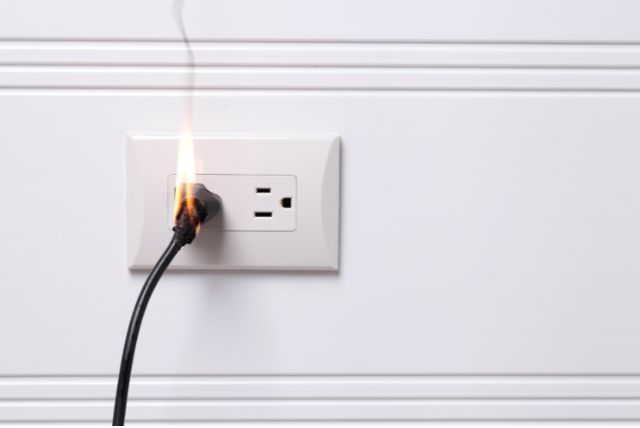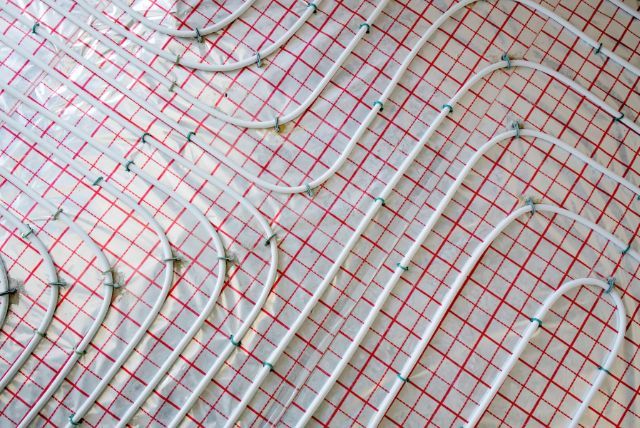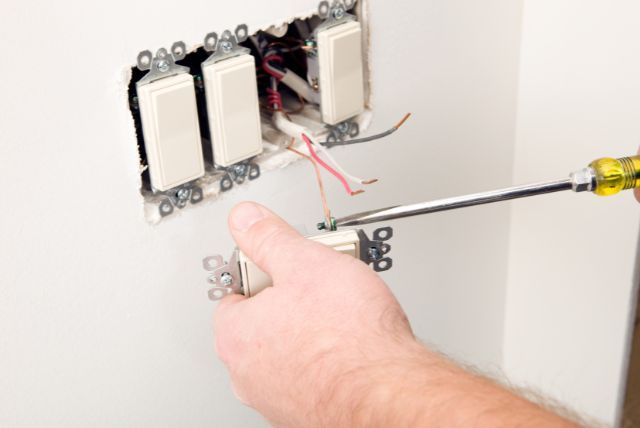How Electrical Grounding Works

Table of Contents
ToggleIn the world of electricity, safety is paramount. Electrical grounding is a crucial aspect of electrical systems that ensures the safe operation of appliances, devices, and power distribution systems. Whether you are an electrical enthusiast, homeowner, or simply curious about how things work, this blog will delve into the fascinating realm of electrical grounding, explaining what it is, why it matters, and how it works to keep us safe.
What is Electrical Grounding?
Electrical grounding, often referred to simply as “grounding,” is a fundamental concept in electrical engineering. At its core, grounding involves creating a direct, low-resistance path for electrical current to flow into the Earth or another conductive material, typically copper or aluminum.
The primary purpose of grounding is safety. It prevents electrical shock, reduces the risk of electrical fires, and helps protect electronic equipment from damage due to power surges and lightning strikes.
Why is Electrical Grounding Important?
Preventing Electrical Shock
The human body is an excellent conductor of electricity. When a faulty electrical device or wiring allows current to flow where it shouldn’t, a person can become part of the electrical circuit, leading to an electric shock. Grounding provides an alternate path for the current to follow, diverting it away from the body and reducing the risk of injury or death.
Protecting Against Electrical Fires
Grounding plays a critical role in preventing electrical fires. When a fault occurs in an electrical circuit, such as a short circuit or an overloaded wire, excessive heat can build up, potentially igniting nearby materials. Proper grounding helps dissipate this excess heat, reducing the risk of fire.
Shielding Against Lightning Strikes
Lightning is a powerful natural force that can cause significant damage to electrical systems and electronic devices. Grounding systems, like lightning rods, provide a path of least resistance for lightning to follow, safely directing the electrical energy into the ground rather than allowing it to damage structures or start fires.
Enhancing Electrical System Performance
Grounding also improves the performance and reliability of electrical systems. By providing a reference point for voltage levels, grounding helps stabilize electrical circuits and reduce the likelihood of voltage fluctuations, which can damage sensitive equipment.
How Does Electrical Grounding Work?
Now that we understand why electrical grounding is vital, let’s explore how it works in practice. Grounding is achieved through various methods and components, each serving a specific purpose.
Grounding Electrode System
The grounding electrode system is the primary component of grounding. It consists of one or more grounding electrodes, typically metal rods or plates, buried in the ground near a building or electrical system. The purpose of these electrodes is to establish a connection with the Earth, creating a low-resistance path for electrical current.
Common types of grounding electrodes include:
- Ground rods: Long, copper or aluminum rods driven into the ground.
- Ground plates: Metal plates buried in a trench and connected to the grounding system.
- Ground loops: Circuits that encircle a building or facility, enhancing grounding effectiveness.
Grounding Conductors
Grounding conductors are metallic wires or cables that connect various components of an electrical system to the grounding electrode system. These conductors ensure that any fault currents are safely directed into the Earth. Grounding conductors are color-coded and often green or bare to distinguish them from other electrical wires.
Key components connected to the grounding system include:
- Service panel: The main electrical panel in a building is bonded to the grounding electrode system. This connection provides a path for fault currents back to the ground.
- Outlets and appliances: Metal casing or frames of outlets and appliances are connected to the grounding conductor. In the event of a fault, the grounding conductor helps carry the current safely away.
- Lightning rods: Lightning rods, or lightning protection systems, consist of metal rods strategically placed on structures to intercept lightning strikes. They are connected to the grounding system to safely dissipate lightning’s electrical energy.
Grounding Bonding
Grounding bonding refers to connecting all metallic components within an electrical system to the grounding system. This includes electrical panels, conduits, enclosures, and metal water and gas pipes. Bonding ensures that all these components remain at the same electrical potential, minimizing the risk of voltage differences that could lead to electrical shock or equipment damage.
Types of Electrical Grounding
There are several types of electrical grounding used in different applications, depending on the specific requirements and safety considerations:
Earthing Grounding
Earthing grounding, also known as “grounding to Earth,” is the most common type of grounding used in residential and commercial electrical systems. It involves connecting the grounding system to the Earth’s conductive surface through grounding electrodes. This method provides a safe path for fault currents to dissipate into the ground.
Equipment Grounding
Equipment grounding is designed to protect individuals and equipment from electrical faults within appliances and devices. It involves connecting the metal casings or frames of electrical equipment to the grounding system. In the event of a fault, the equipment grounding conductor provides a low-resistance path for fault currents, reducing the risk of electric shock.
System Grounding
System grounding is essential for power distribution systems, including power plants, substations, and electrical grids. It ensures that one of the conductors in the system (usually the neutral conductor) is grounded. This grounding method helps stabilize voltage levels and provides a reference point for the electrical system.
Lightning Protection Grounding
Lightning protection grounding is specifically designed to safeguard structures from lightning strikes. Lightning rods and grounding systems intercept lightning strikes and channel the electrical energy safely into the ground, preventing damage to buildings and equipment.
Maintaining Electrical Grounding Systems
Proper maintenance of electrical grounding systems is crucial to ensure their effectiveness and safety. Over time, factors like corrosion, soil conditions, and physical damage can compromise grounding components. Here are essential maintenance tasks:
Inspection
Regularly inspect grounding electrodes, conductors, and connections for signs of corrosion, physical damage, or loose connections. Address any issues promptly to maintain the integrity of the grounding system.
Soil Resistance Testing
Periodically measure the resistance of the soil surrounding grounding electrodes. High soil resistance can hinder the effectiveness of grounding. If resistance levels are too high, consider adding more grounding electrodes or improving the grounding system’s design.
Lightning Protection System Inspection
If your property has a lightning protection system, conduct periodic inspections to ensure that lightning rods and associated components are in good condition and properly connected to the grounding system.
Grounding Conductor Continuity Testing
Verify the continuity of grounding conductors to ensure they are effectively connected throughout the electrical system. Faulty or disconnected conductors can compromise the safety of the system.
Key Takeaways
Electrical grounding is an essential aspect of electrical safety and system performance. By creating a low-resistance path for electrical current to flow safely into the Earth, grounding protects us from electrical shock, prevents fires, and shields electronic equipment from damage. Understanding the principles and methods of electrical grounding empowers us to maintain safe and reliable electrical systems in our homes, businesses, and infrastructure. In the electrified world we live in, grounding remains a critical element in keeping us connected and secure. Make sure your electrical system is grounded properly by a professional today!











Leave a Reply